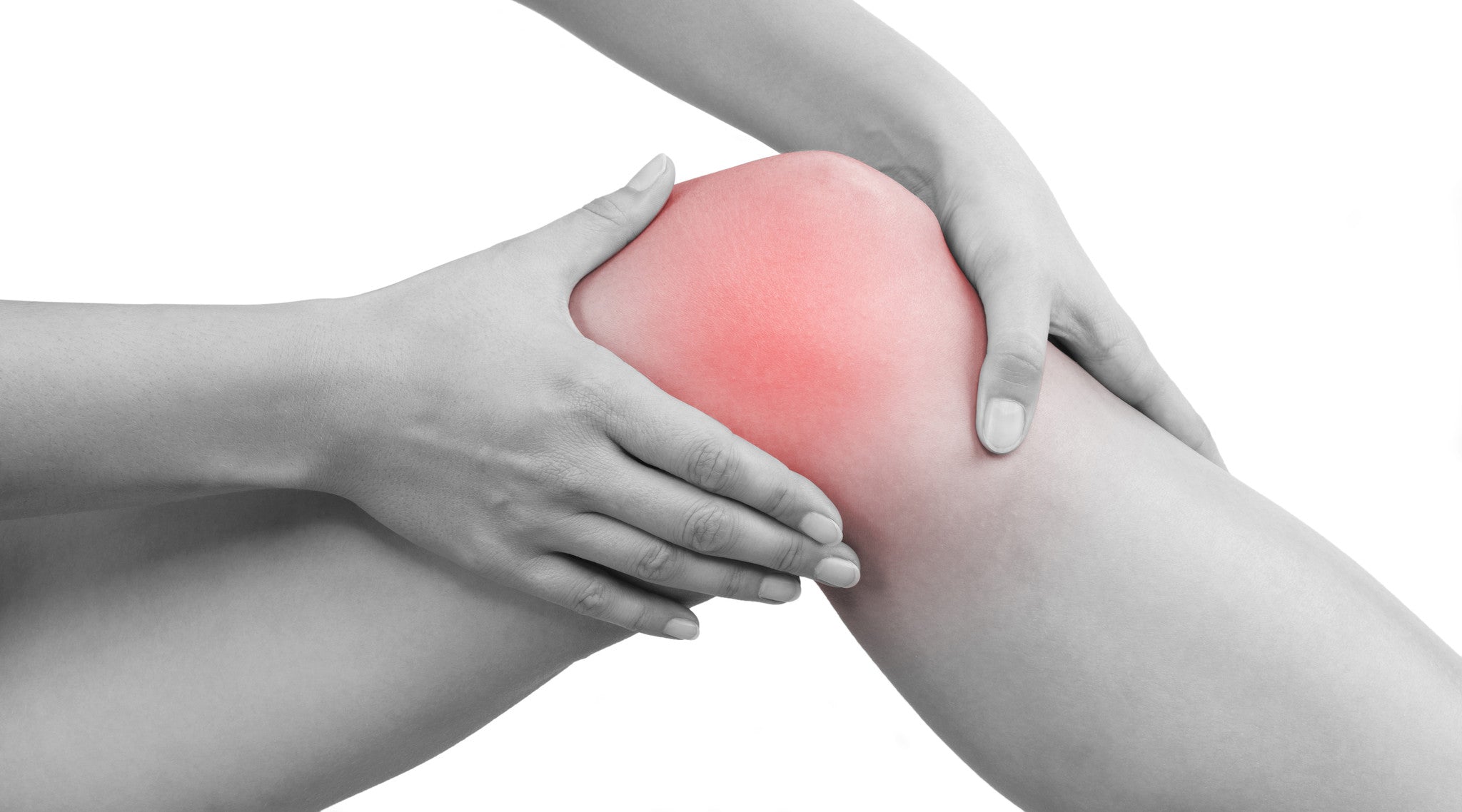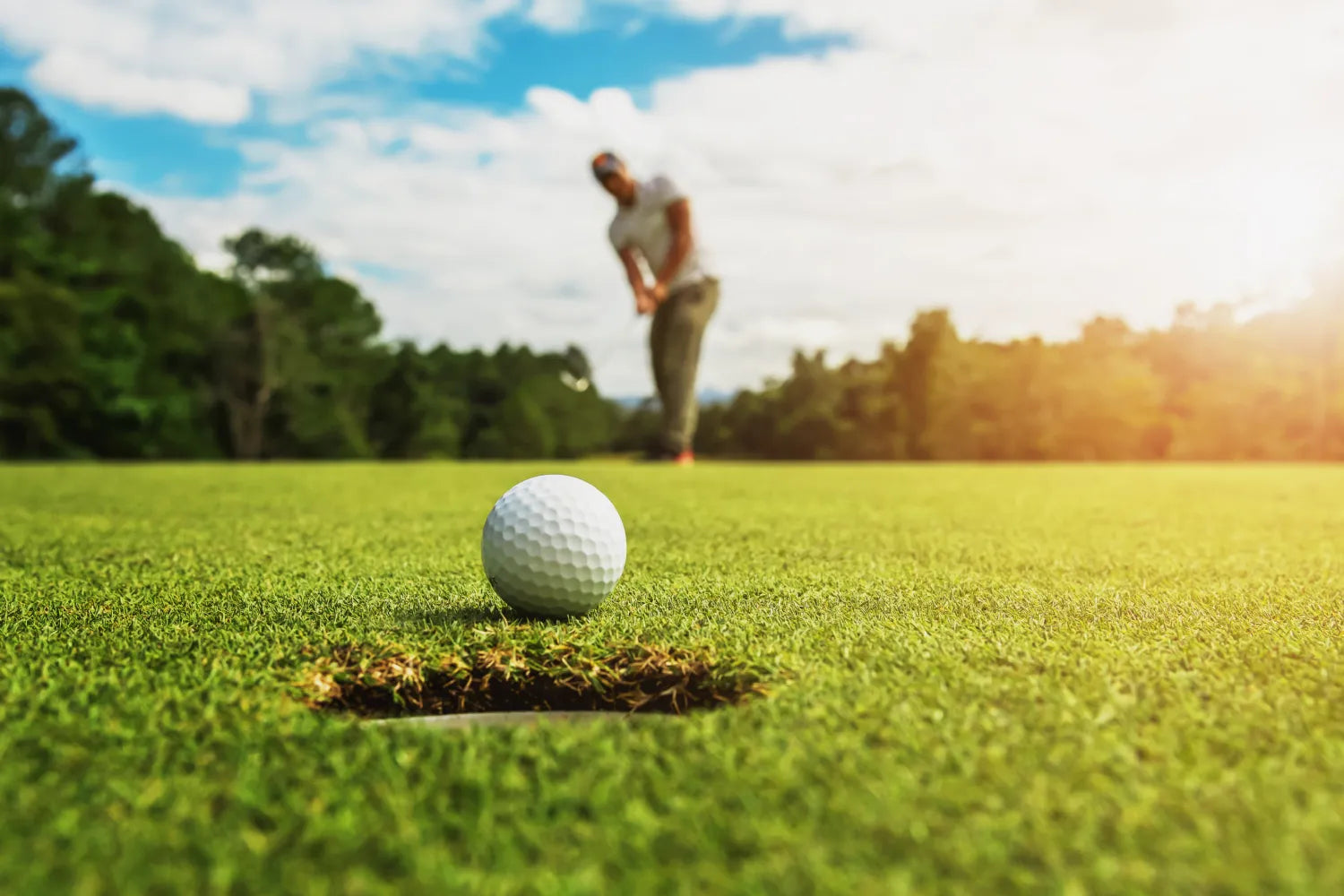After a round of golf, muscle soreness is a familiar occurrence, impacting players of all skill levels. Understanding the nuances of this soreness is crucial for avid golfers seeking to enhance their post-game recovery and overall well-being.
This article will dive into why that soreness occurs and how to boost muscle recovery to make golfing a more enjoyable, pain-free experience.
Why Do Your Muscles Get Sore After Playing Golf?
Muscle soreness after a round of golf is a shared experience among enthusiasts. This discomfort often stems from the repetitive and asymmetrical nature of the golf swing, which engages various muscle groups.
The eccentric contractions involved in swinging, coupled with the intensity of the game, can lead to common golf injuries from microscopic damage to muscle fibers and subsequent inflammation. The primary culprits include the muscles involved in the swing, such as the obliques, lats, and quadriceps.
Overuse of these muscles and the torque generated during the swing contribute to soreness, stiffness, and sometimes fatigue. It's essential to recognize that muscle soreness in golf is not exclusive to beginners; even seasoned golfers encounter this challenge.
The mechanics of the swing, the force exerted, and the repeated motion all contribute to the strain on various muscle groups, regardless of how long you have been playing and at what level you play.
As we explore effective strategies for post-golf muscle recovery, this understanding of the specific muscles involved and the mechanics of the golf swing will allow you to tailor their recovery routines for optimal results.
What Is Muscle Recovery?
Understanding the science behind muscle recovery is essential to know how to eliminate post-golf soreness. This section will dive into what muscle recovery is and the factors that influence how efficiently this process works in your body.
Inflammation and Repair
Microscopic damage to muscle fibers during golf triggers an inflammatory response. This inflammation is a natural part of the healing process.
It signals the body to initiate repair mechanisms, leading to the regeneration of damaged muscle tissues. While inflammation is a necessary step, effectively managing it becomes key to a smoother recovery.
Micro-Tears and Adaptation
The eccentric contractions in the golf swing cause micro-tears in muscle fibers. These tears, though small, play a crucial role in muscle adaptation and growth.
The body responds to these tears by reinforcing the affected muscles, making them more resilient over time. This adaptation process is integral to improving performance but necessitates proper recovery to avoid cumulative strain.
Nutrient Flow and Oxygenation
Adequate nutrient flow and oxygenation are paramount for efficient recovery. Engaging in physical activities like golf demands an increased supply of nutrients and oxygen to the working muscles.
Restorative Sleep
Quality sleep is integral to the muscle recovery process. During the deep sleep phases, the body releases growth hormone, which is instrumental in repairing and rebuilding tissues. Sleep deficiency can impede this process, prolonging muscle soreness and affecting overall recovery.
Understanding the intricate science of muscle recovery provides valuable insights for golfers looking to optimize their post-game routines.
How Can You Enhance Your Post-Golf Muscle Recovery?
Navigating the path to effective post-golf muscle recovery involves employing a combination of strategic measures aimed at minimizing soreness and promoting overall well-being.
Here, we explore key strategies that can enhance the recovery experience for golf enthusiasts:
Hydration and Nutrition
Proper hydration is foundational for recovery. Replenishing fluids lost during the game supports nutrient transportation, aiding in the repair of damaged muscle tissues. A well-balanced post-game meal, rich in proteins and carbohydrates, provides the necessary building blocks for muscle recovery.
Stretching and Flexibility Exercises
Incorporating dynamic stretching and flexibility exercises into the post-golf routine helps alleviate muscle tightness and enhances your range of motion. Targeting areas commonly affected by the golf swing, such as the shoulders, hips, and back, can contribute to a more flexible and resilient musculature.
Gradual Cool Down
A gradual cool-down routine, including light aerobic exercises and gentle stretching, helps ease the transition from active play to rest. This aids in preventing the abrupt cessation of activity, reducing the likelihood of stiffness and soreness.
Contrast Therapy
Alternating between hot and cold treatments, known as contrast therapy, can be beneficial for muscle recovery. A warm shower or bath followed by a brief cold compress helps manage inflammation and enhances blood circulation, promoting quicker recovery.
Rest and Active Recovery
Prioritize sufficient rest to allow the body to naturally repair and adapt to the physical demands of golf. Incorporating light, low-impact activities, such as walking or swimming, on rest days promotes circulation without imposing excessive strain on recovering muscles.
Massage and Self-Myofascial Release
Massage and self-myofascial release techniques, using tools like foam rollers, can target tight knots and trigger points in the muscles. This aids in reducing muscle tension and promoting relaxation.
Mindful Breathing and Relaxation
Mindful breathing exercises and relaxation techniques contribute to overall recovery by reducing stress and tension. Incorporating these practices post-game enhances the body's ability to enter a state of rest and repair.
Using the Right Gear
Investing in the right gear can be a game-changer in post-golf muscle recovery. Compression sleeves, like the Incrediwear Elbow Sleeve, offer targeted support to soothe muscle soreness and support circulation.
The Incrediwear technology, rooted in semiconductor elements, facilitates healthy blood flow and supports the body's natural healing processes. By integrating these effective strategies into the post-golf routine, individuals can create a comprehensive recovery plan that aligns with the body's natural processes.
This proactive approach minimizes muscle soreness and fosters a more sustainable and enjoyable golfing experience.
Wrapping Up
Understanding and implementing effective post-game muscle recovery strategies is paramount if you want to enjoy golfing for a long time. By embracing hydration, nutrition, stretching, and adopting long-term lifestyle adjustments, golf enthusiasts can cultivate resilience in their muscles.
This proactive approach not only minimizes immediate soreness but also paves the way for a sustainable and enjoyable golfing experience. Here's to optimizing recovery, promoting muscle health, and relishing every swing on the course.
Links:
Stretching: Focus on flexibility | Mayo Clinic
Alternating hot and cold water immersion for athlete recovery: A review | Research Gate
Effectiveness of myofascial release: systematic review of randomized controlled trials | NIH
Read more

The ubiquitous use of keyboards in modern life has brought about an unforeseen consequence: typing-related injuries. As our reliance on computers grows, understanding the risks associated with repe...

Medically Reviewed By | Dr. Kate Panawash, PT, NCS, DPT Dealing with knee pain can be a huge roadblock to staying active and even going about your daily activities. Knee injuries are actually one o...






Leave a comment
All comments are moderated before being published.
This site is protected by hCaptcha and the hCaptcha Privacy Policy and Terms of Service apply.